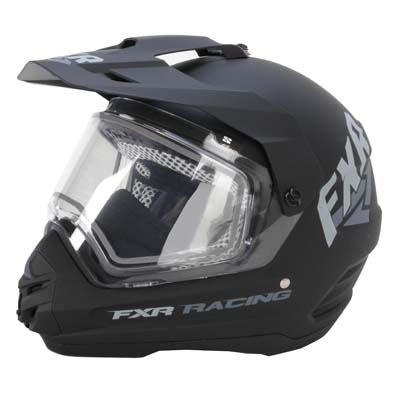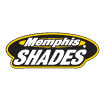www.denniskirk.com
800-969-7501
Snowmobile Helmet Buying Guide
Best Snowmobile Helmets
Snowmobile helmets are a necessary piece of gear. They will not only protect your head in an impact, but they also retain heat to keep you warm. As the sport of snowmobiling has progressed and evolved, so has the helmets that are made for the sport. Before you purchase a snowmobile helmet, it's important to know which type of helmet matches your style of riding. It's also important to know what features and safety ratings to look for. Check out the guide to help you choose the absolute best snowmobile helmet for you.
Types of Snowmobile Helmets
Over the years, snowmobile helmets have evolved into a few different styles to match the different styles of riding that have developed. Each type of helmet has its own advantages and disadvantages. As a rider, you need to determine which type matches your style of riding the best.

Full Face
For the most protection in a crash and from the cold, a full face snowmobile helmet is the best option. Because the helmet covers the entirety of your head and has very few moving parts, it has low amounts of wind noise and buffeting. The full face helmet will work for a variety of different situations, but is the preferred choice for many trail riders.

Modular
The modular snowmobile helmet basically has the same traits as the full face, but with the added advantage of having the ability to lift the chin bar while stopped. This ability is very convenient for riders who stop often and want quick access to their faces. The added moving parts of the helmet decrease the amount of absolute protection provided by the helmet, though it is still very acceptable.

Motocross and Snocross
For more active riders, like Snocross and mountain riders, the Motocross or Snocross style of helmet is the best option. Instead of a face shield, the rider uses separate goggles. This allows the rider to have a greater field of vision as the goggles sit closer to the face. A MX style helmet also has far more ventilation capabilities for the rider. This is important because those styles of riding require the rider to be much more active, which can cause them to perspire more. The open face and the visor will add more wind buffeting at high speeds.

Dual Sport Style
The dual sport style of snowmobile helmet is perfect for riders who love the shape of the MX helmet but would rather have a face shield instead of goggles. The shape of the helmet still allows for a good field of vision and decent ventilation. The shield is easier to use than goggles and is also easier to maintain.
Shields and Lenses
One of the major differences between a snowmobile helmet and a motorcycle helmet is the type of shield that is used in each. A motorcycle helmet is a single pane shield that is "harder" for more impact protection. A snowmobile shield needs to be a dual pane shield. A single pane shield on a motorcycle helmet just will not work in cold winter temperatures. The same goes for goggle lenses.
Dual Pane
A dual pane shield is a necessary component of a snowmobile helmet. The two separate panes help to minimize the amount of fogging on the shield in cold temperatures. A dual pane shield works the same way that a dual pane window does. The two shields are separated by a thin layer of gas. The layer of gas acts as an insulator and helps to prevent heat transfer, which creates condensation on the shield in cold temperatures.
Framed vs. Frameless
In the past, all dual pane shields needed to have the plastic frame around the outside to seal the two panes. With better sealing technology, the dual pane shield can be made without a frame. There is no benefit to having one or the other, besides the fact that the frameless shield can have a cleaner, more aesthetic appearance.
Heated Electric Shield
Though the dual pane shield works exponentially better than a single pane shield, there are times when even that is not enough to prevent fog build-up. The only way to completely eliminate fogging is to have a heated electric shield and even that can fail in cold enough temperatures. A heated shield has electric heating elements that run along the outside rim of the shield. These are powered by a cord that is plugged into your snowmobile's electrical system. Many full face and modular snowmobile helmets have an electric shield option available.
Breath Guard

In addition to the dual pane shield, snowmobile helmets also have breath guards to help prevent fogging. A breath guard should seal tightly over your nose and around your face to help deflect your breath down and out the bottom of the helmet. With your breath going out the bottom of the helmet, it cannot condense on to the shield. Many breath guards have a flexible metal strip along the nose that the rider can use to form the top of the breath guard around the nose for a tight seal. Breath guards can be removed and installed by either using Velcro or snaps. For MX style snowmobile helmets, a breath guard will also help to prevent the cold air from hitting bare skin.
Ventilation
You may not think that ample airflow in a snowmobile helmet is a good thing, but it certainly is. The ventilation helps to clear the moisture out of the helmet that can build up inside from the rider's breath. Helmets that have adjustable vents are the optimal choice for snowmobiling as you can set the amount of airflow to what you need.
Safety Rating
Just like with any other motorsports helmet, the safety rating of a snowmobile helmet is very important. DOT, SNELL and ECE are all separate safety rating systems that test helmets for Impact (shock absorbing capacity), Penetration (ability to withstand a blow from a sharp object), Retention (chin strap's ability to stay fastened), and Peripheral vision.
DOT
All snowmobile helmets should at least carry the minimum of a DOT standard. For some areas, it may be required. The Federal Government's Department of Transportation sets the minimum standard for which helmets must meet to become DOT certified.
Snell
As an independent not-for-profit group, Snell sets a higher standard for helmets to meet in order to be certified. Snell does all of the testing to ensure that the helmets being produced actually meet the standards that they set.
ECE
The ECE helmet standards are set by the Economic Commission for Europe and are in most ways very similar to the DOT standards. They do add a few more criteria that needs to be met and they also require the helmets to be sampled to ensure that the standards are being met.
















